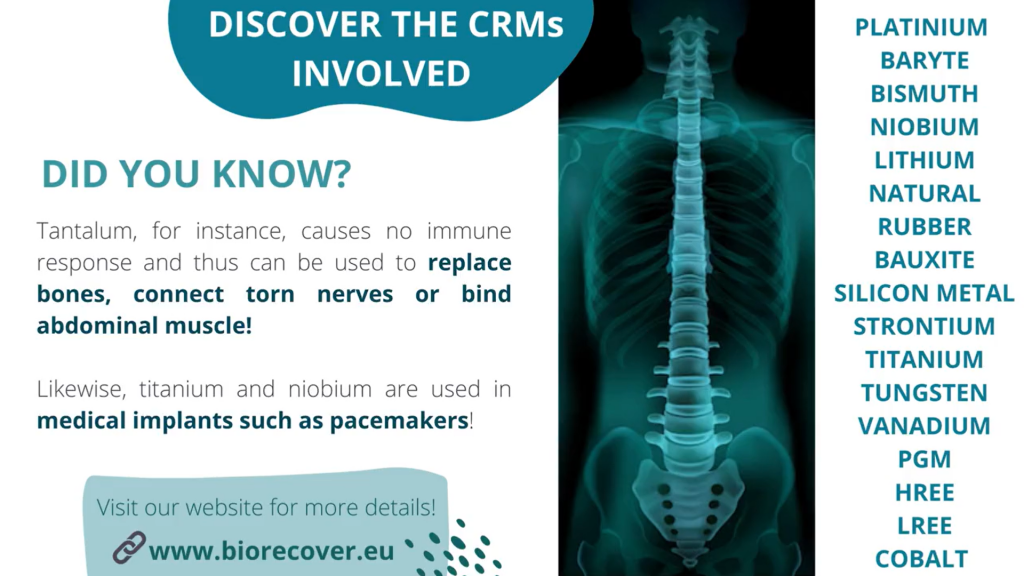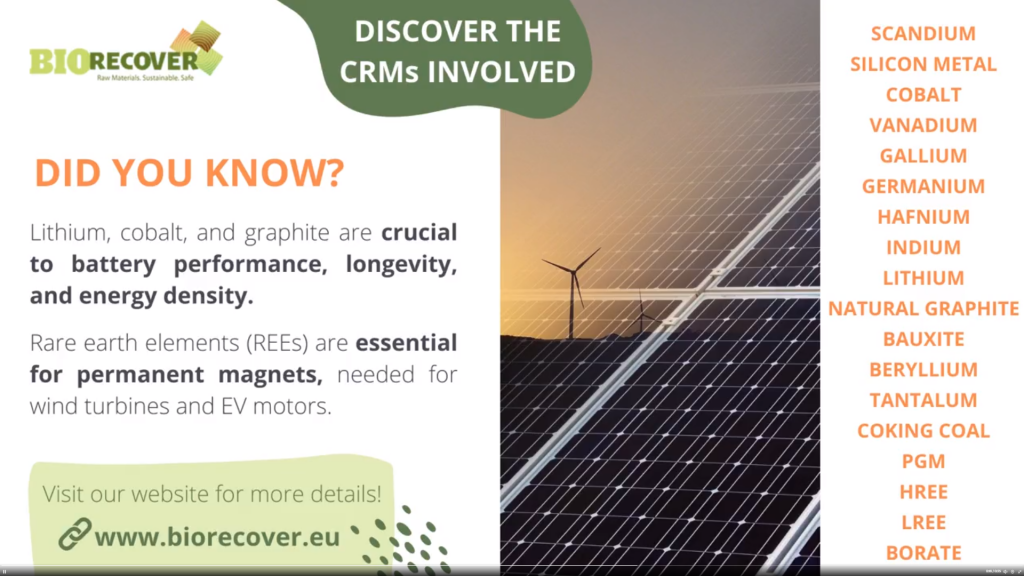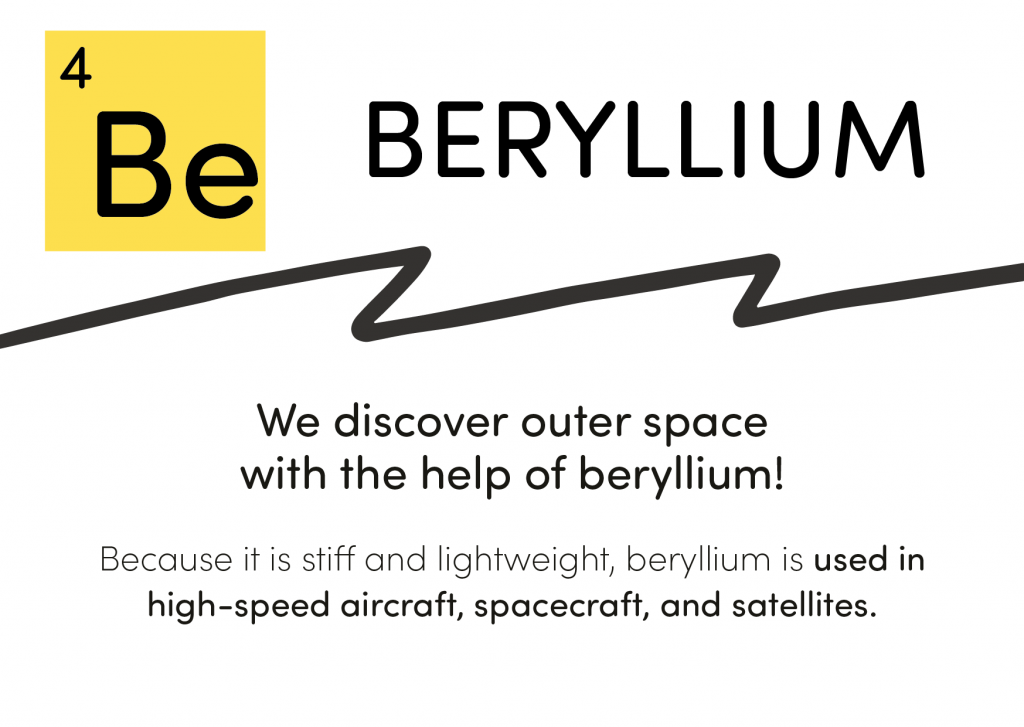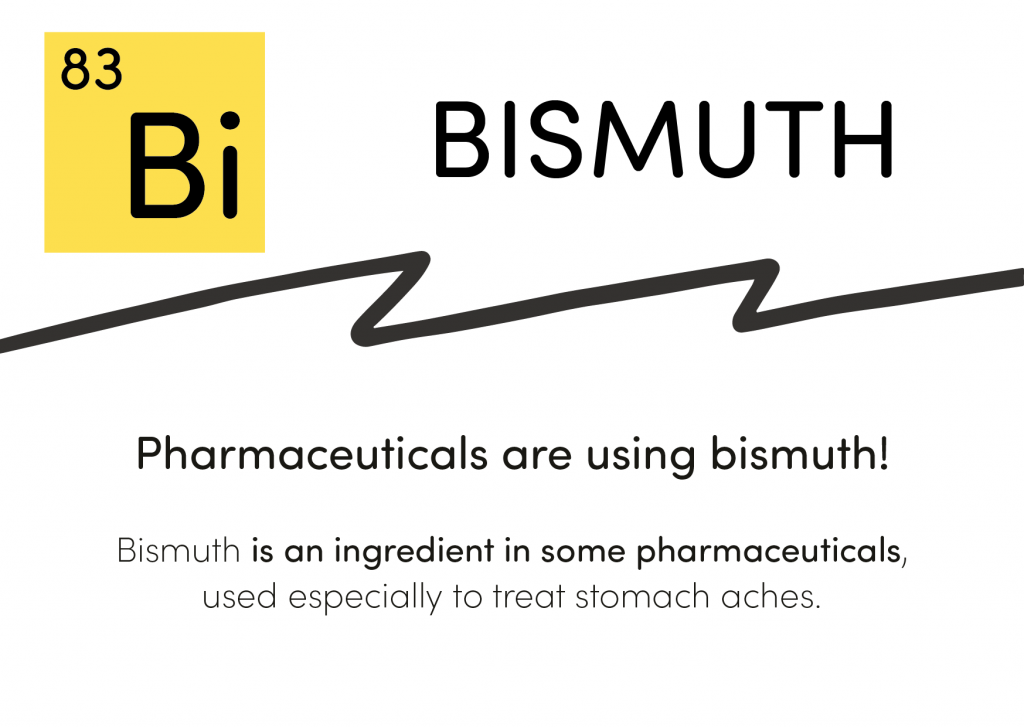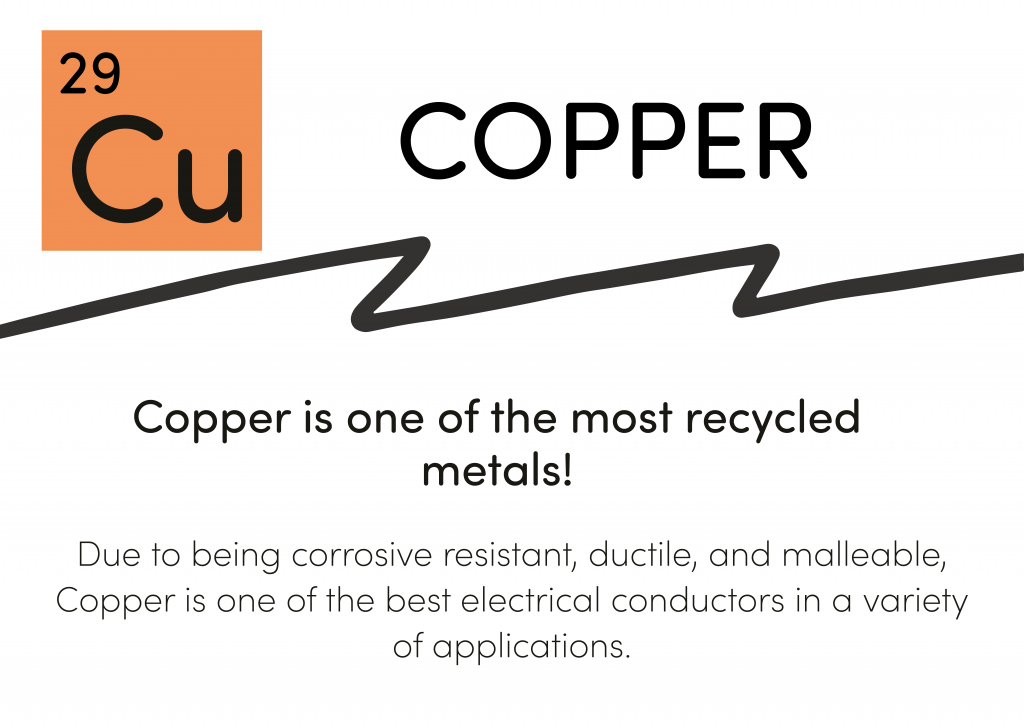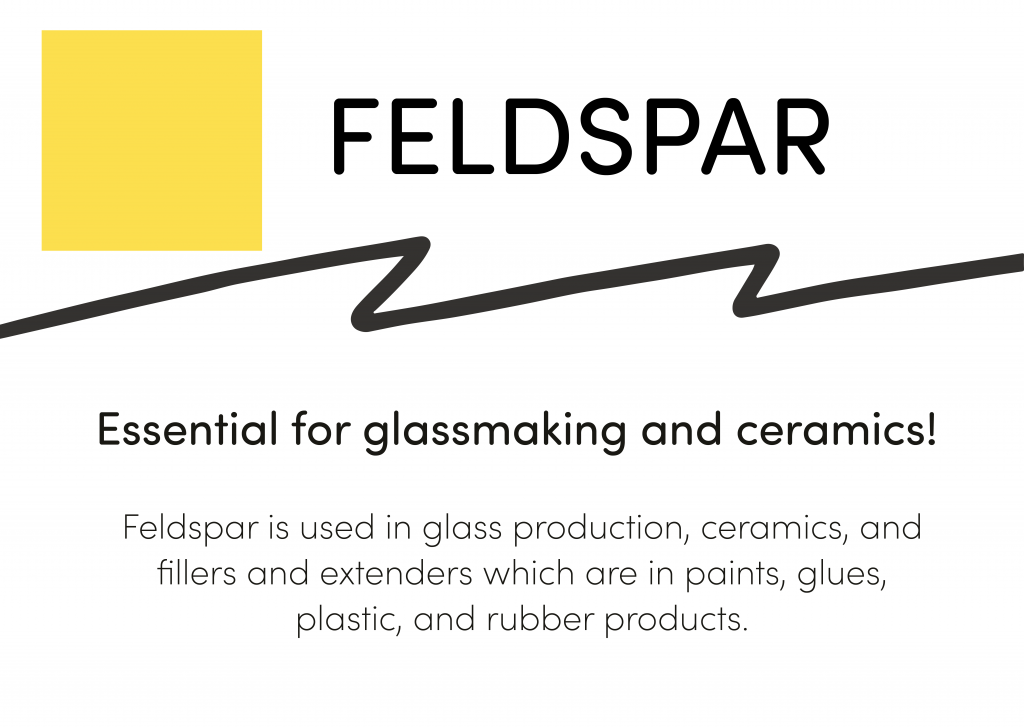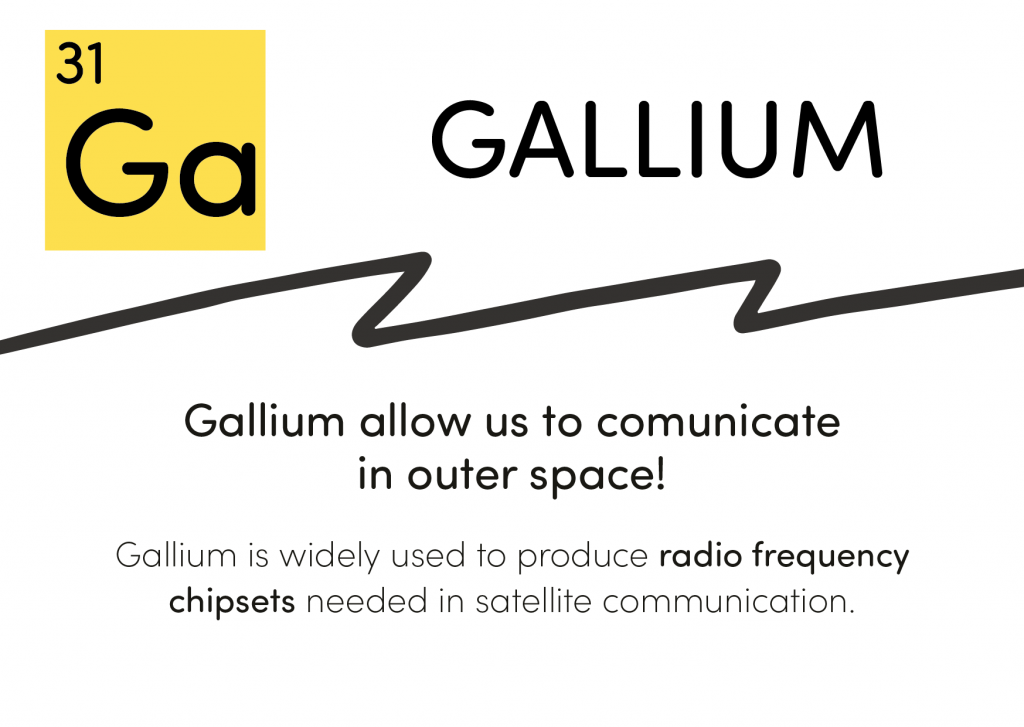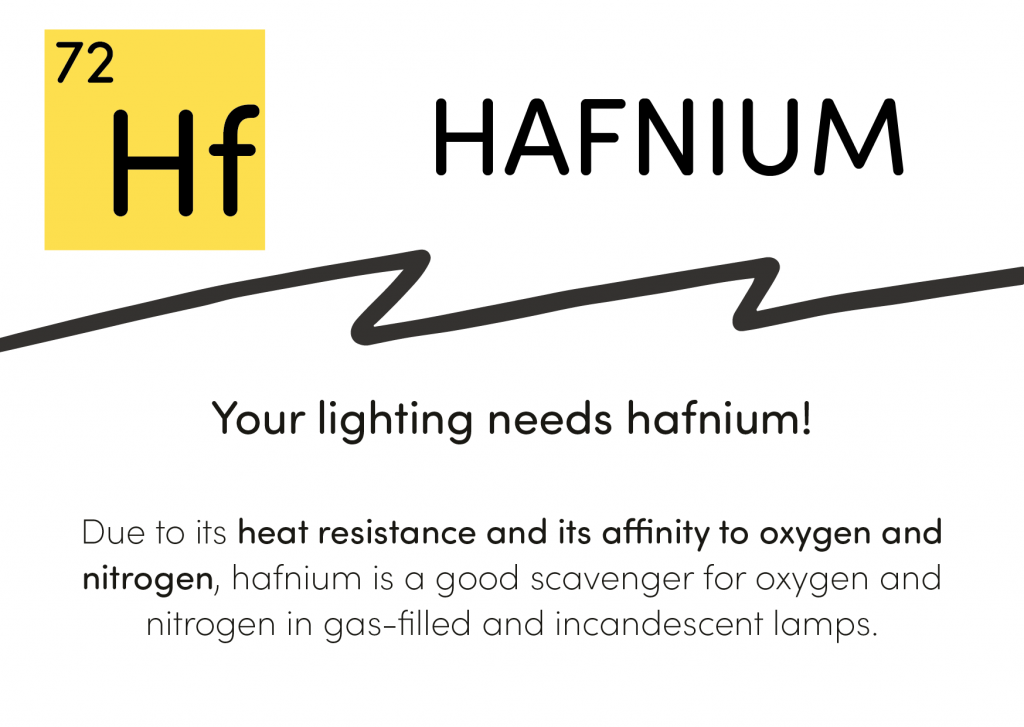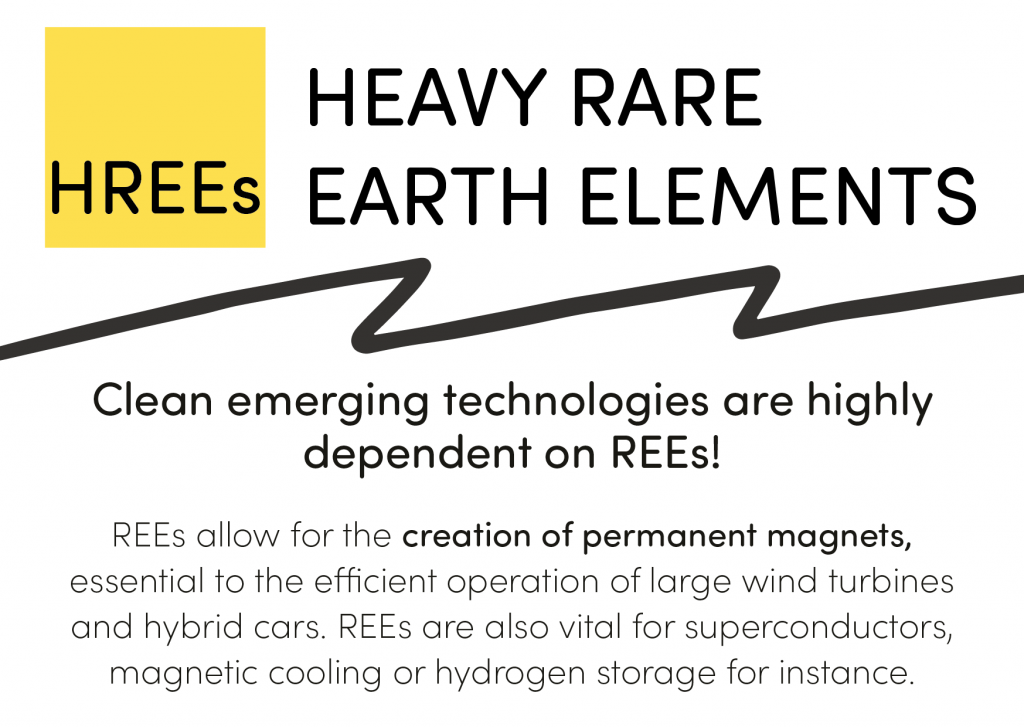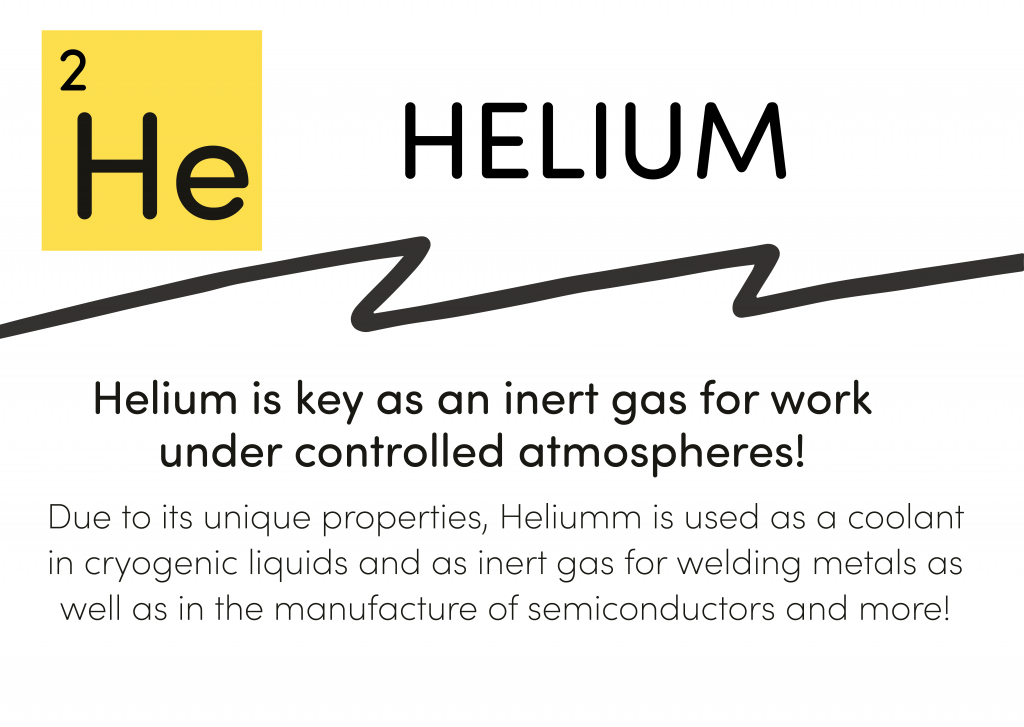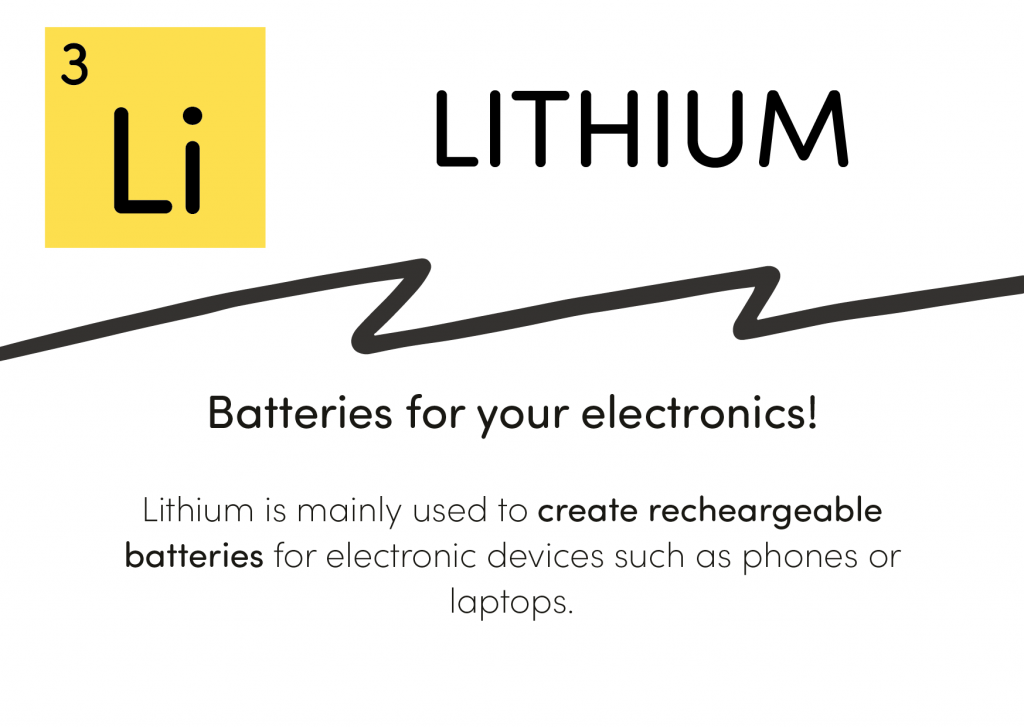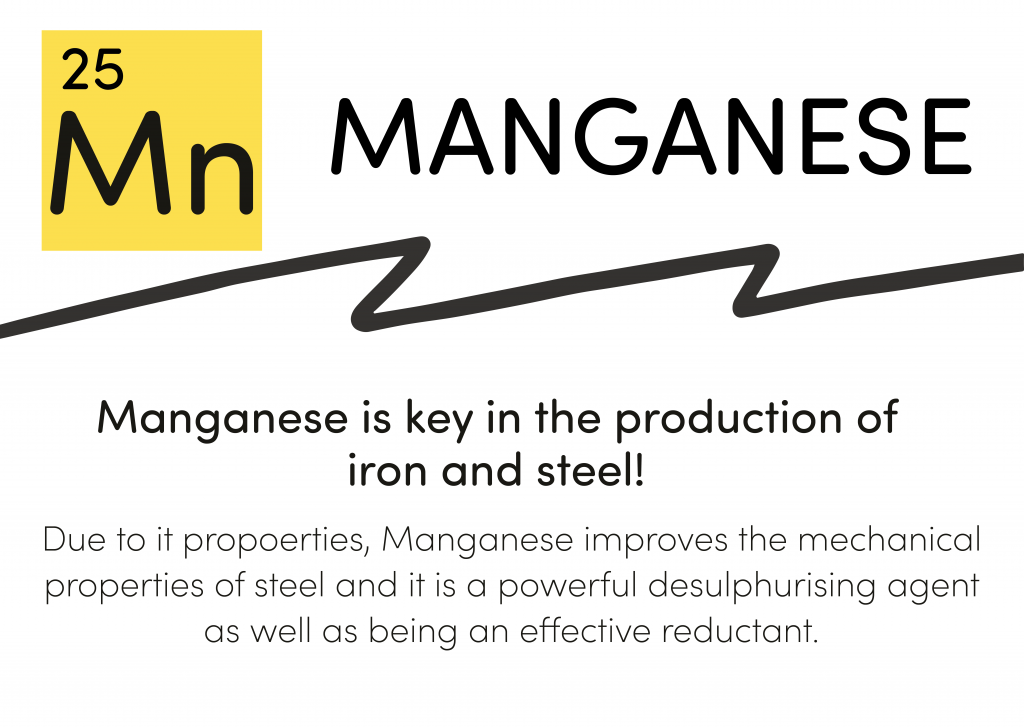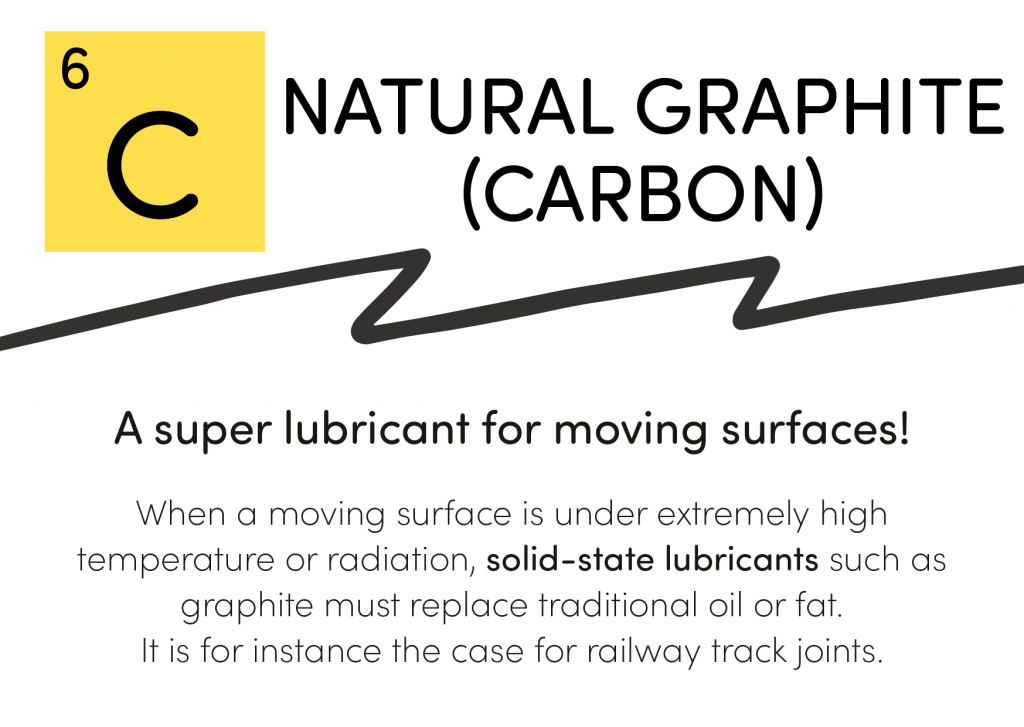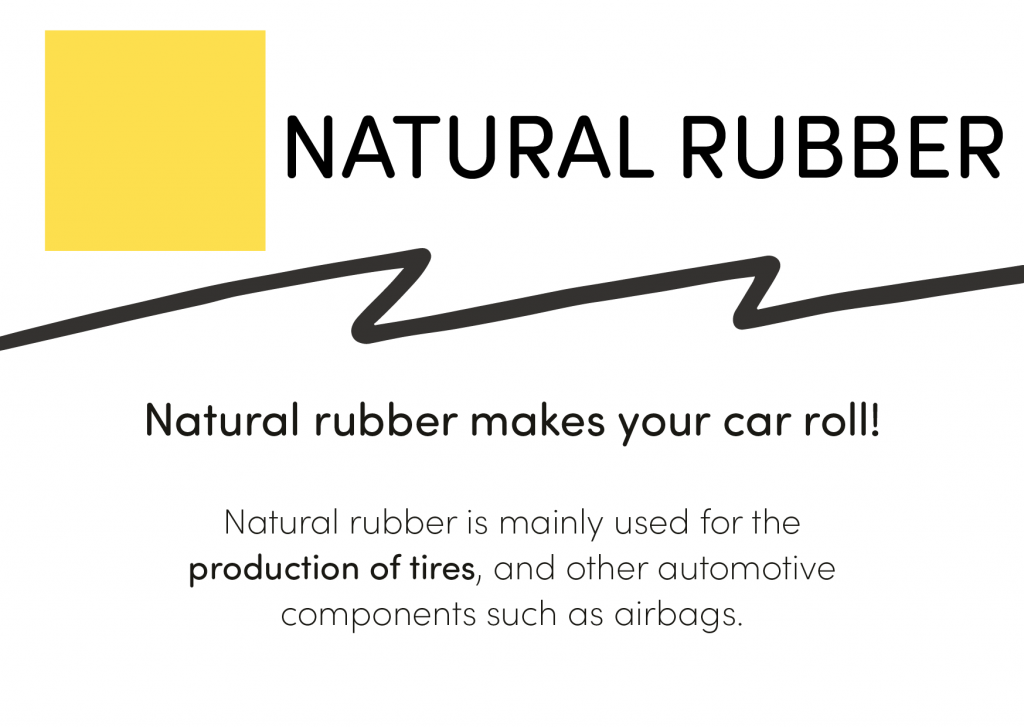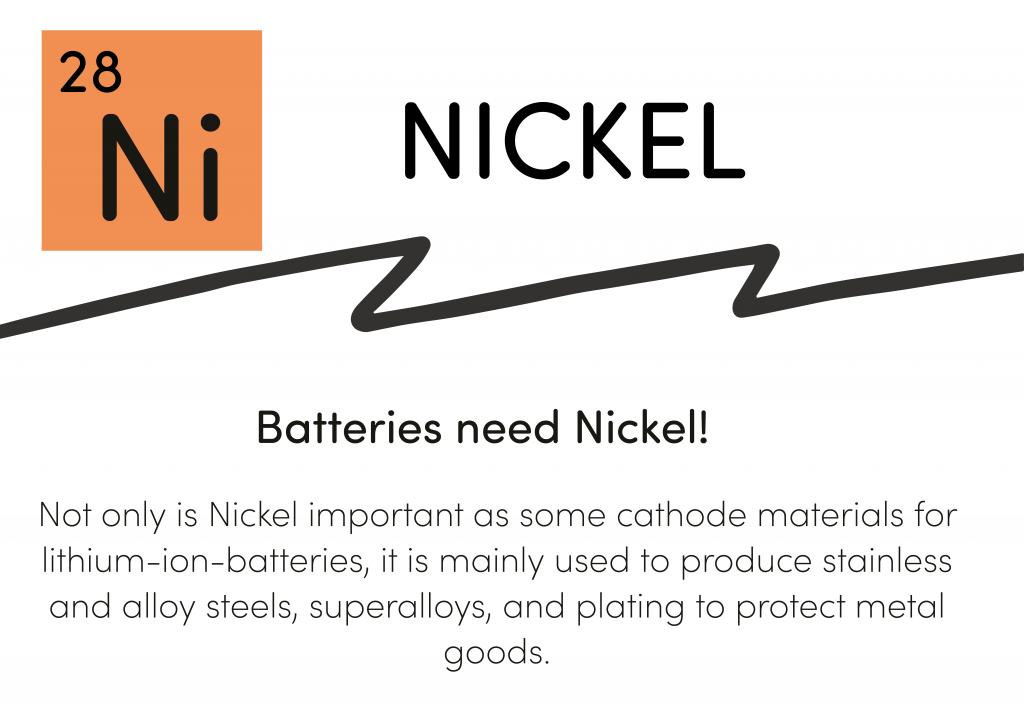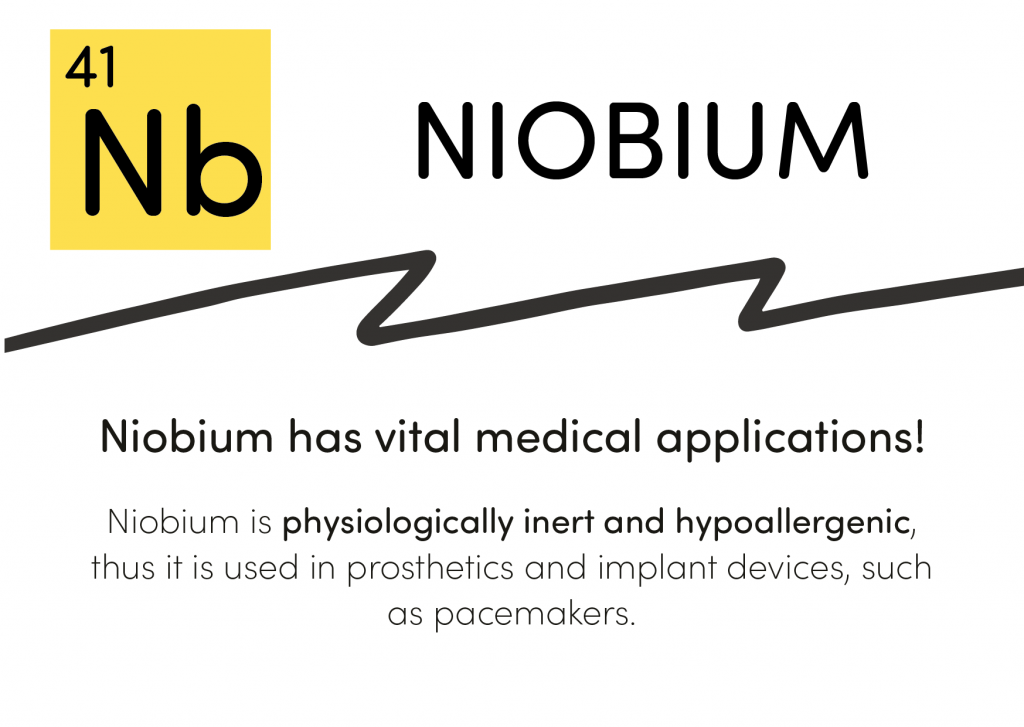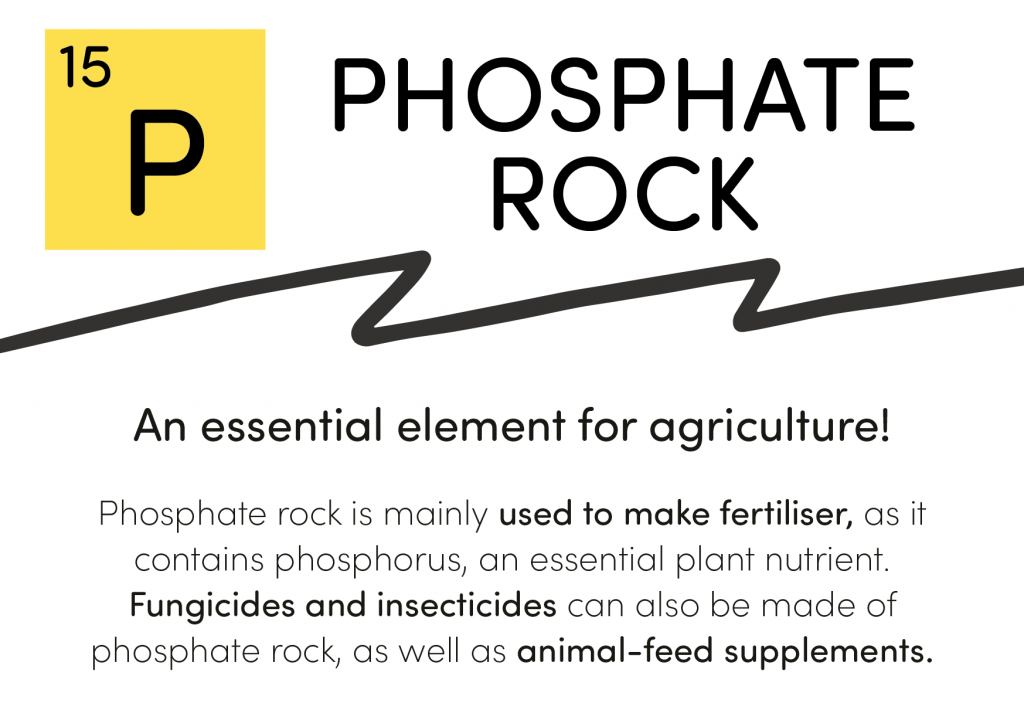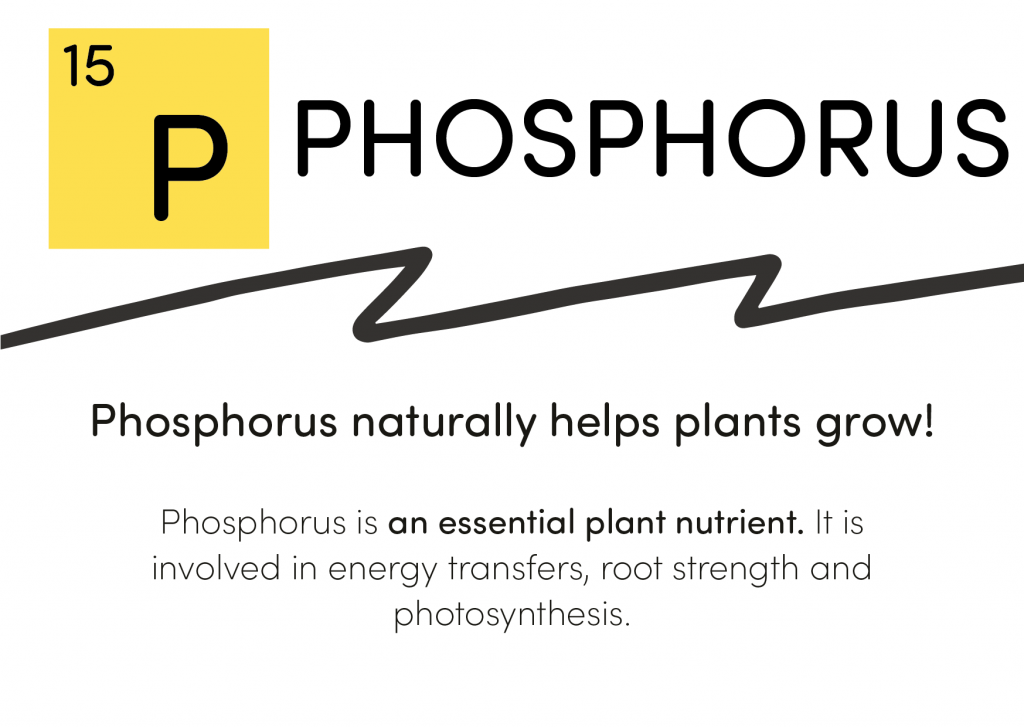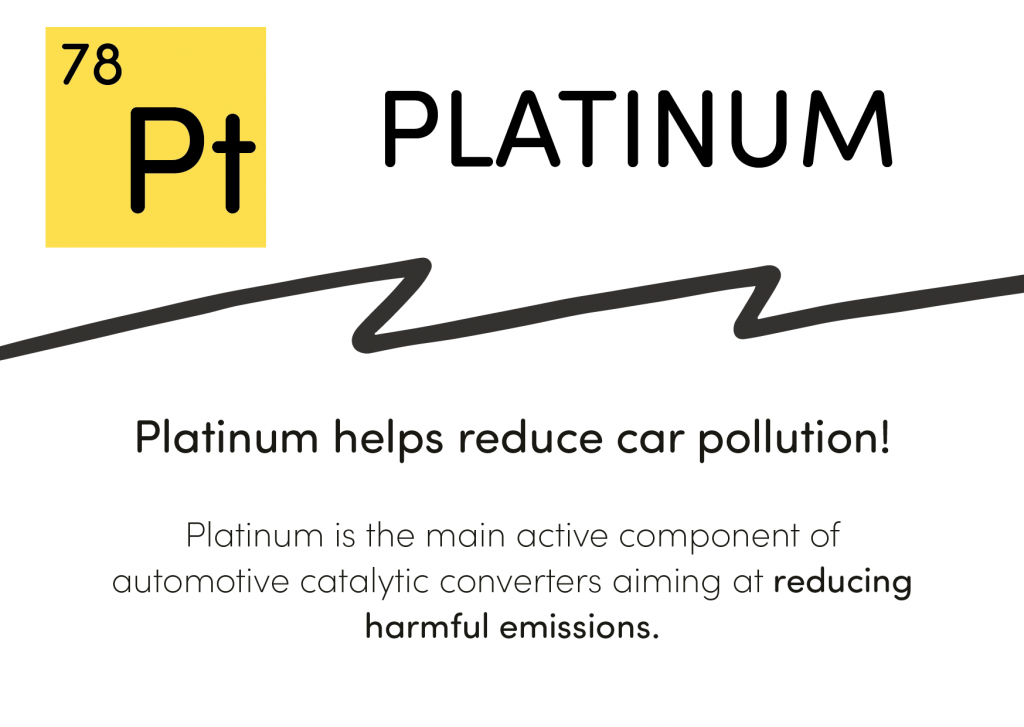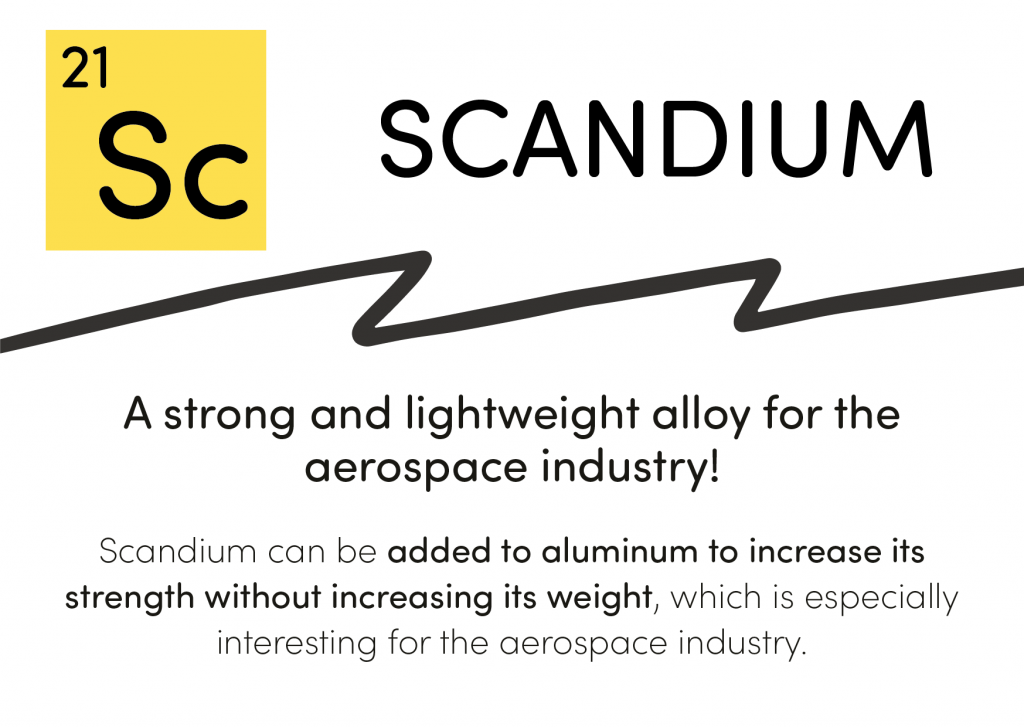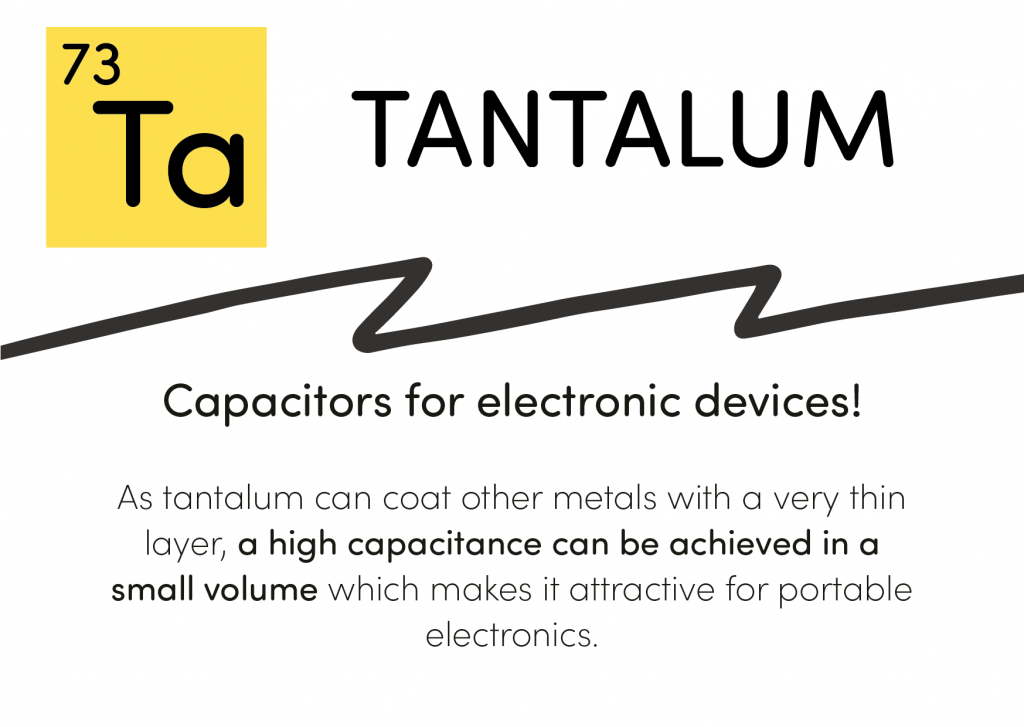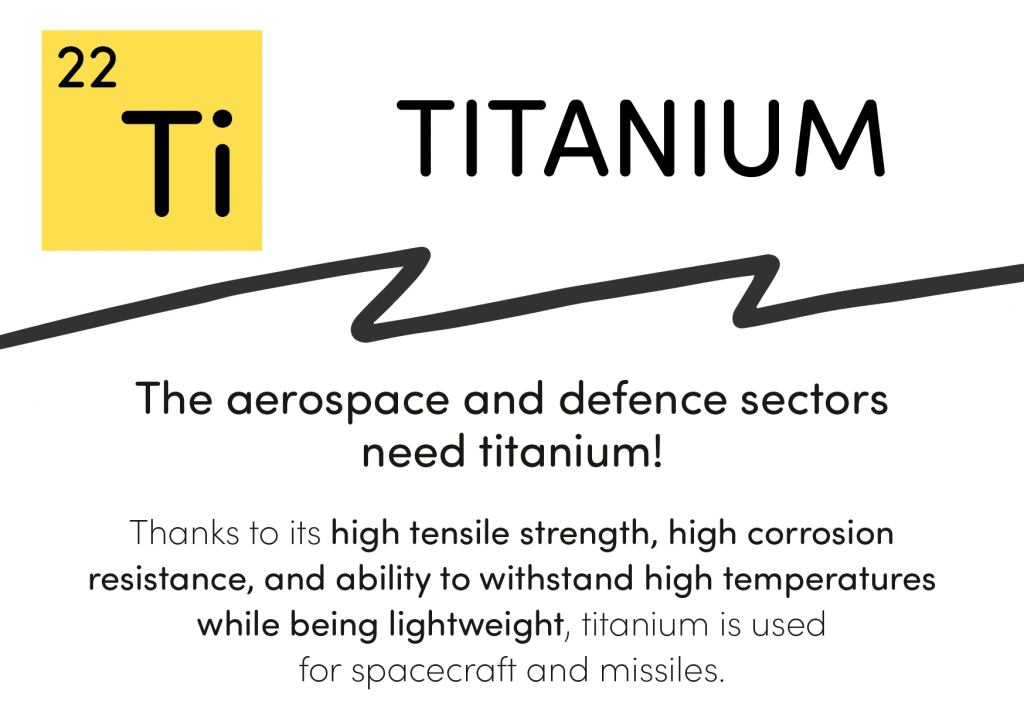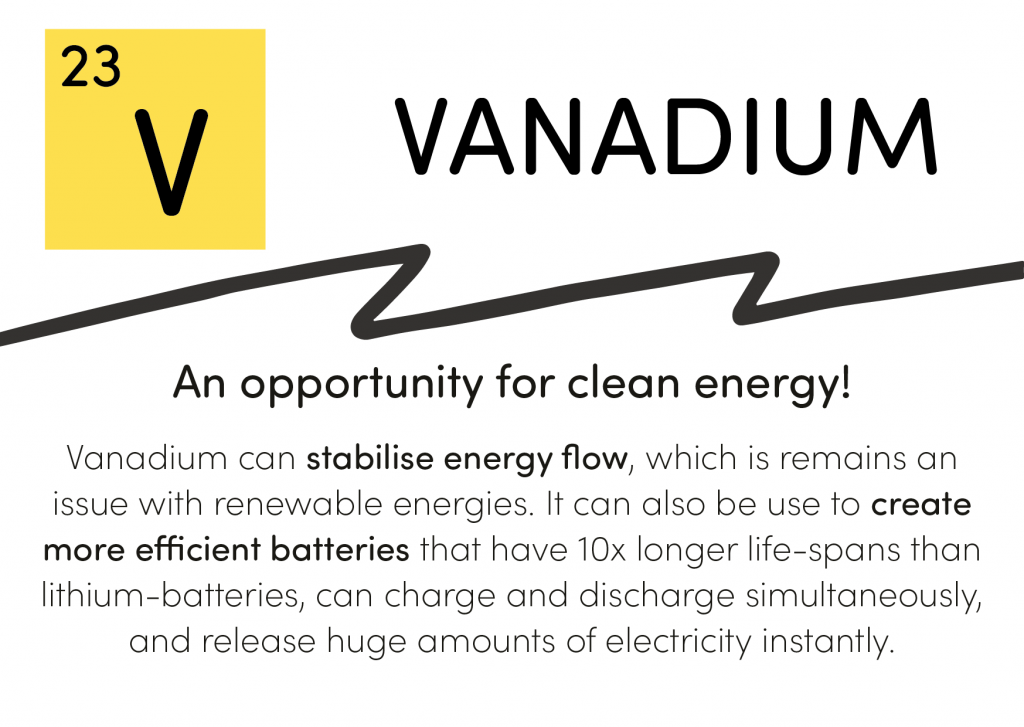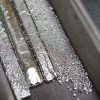The EU is highly dependent on raw materials that are essential for its growth and competitiveness. Indeed, raw materials are basic inputs used in the manufacturing and production of goods and their secure supply is key to the success and competitiveness of the EU economy and industries. They are also essential to reaching sustainable development goals, as the development of low carbon technologies to fulfil EU climate and energy objectives is dependent on the availability of raw materials.
Because deposits of raw materials in the EU are not easily accessible, are depleted after years of exploitation or are not exploitable for technical or economic reasons, European metal production has decreased significantly. As a result, the EU is highly import-dependent when it comes to sourcing metals, which poses a risk to its security of supply.
What are CRMs?
According to the European Commission, Critical Raw Materials (CRMs) have a necessary use and are subject to supply restrictions. It is a variable notion over time that is expressed in two ways: the availability of the substance and its economic importance. Most of the time, it translates into a price signal that encourages economic actors to take steps to mitigate its effects, either by increasing availability (new resources) or by reducing needs (changes in technonological studies). The European Commission has listed 30 CRMs, which you can discover on the following images:
Discover which key sector rely on CRMs!
LEARN ABOUT ANTIMONY
USES
Flame retardant
- Antimony is used to prevent ignition in everyday objects, including plastics, cable coatings, and household appliances.
Battery efficiency
- Antimony improves batteries’ charging characteristics and prevents the production of hydrogen during charging.
RECYCLABILITY
The recycling rate of antimony is estimated to be less than 10%. However, the 2015 Raw Material Supply Assessment Study suggests that the end of life-cycle recycling rate of antimony could reach 28%. Recycled antimony mainly comes from lead acid batteries. In most of its other uses, such as flame retardant, glasses, ceramics, antimony is too dispersed and therefore its recovery is not economically viable.
LEARN ABOUT BAUXITE
USES
Aluminum production:
- Bauxite is the main source for the global manufacture of aluminum. Therefore, it is an essential raw material for many sectors such as mobility, defence or digital.
Safer road surfaces:
- Calcined bauxite is used in roads to prevent accidents as it has high friction and anti-skid properties.
RECYCLABILITY
Bauxite used to create aluminium can very easily be recovered. Indeed, aluminium can be recycled many times without losing quality and recycling requires 30 times less energy than producing pure aluminium from bauxite. In other words, the energy required to produce one aluminium can from bauxite is the same as the energy required to produce up to 30 cans of recycled aluminium! Recycling aluminium is therefore essential to preserve bauxite. The Planet Mark Environmental Foundation reports that every tonne of aluminium that is recycled results in conserving five tonnes of bauxite!
LEARN ABOUT ARSENIC
USES
Zinc production and glass manufacturing
- Arsenic is used in the manufacturing of glass and zinc production.
Semiconductors
- Arsenic is used to manufacture semiconductors, which are essential for the production of computers, smartphones, and other electronic devices.
Batteries
- Arsenic is used in the production of lithium-ion batteries, which are used in electric vehicles and other portable devices.
Pesticides
- Arsenic is used in some pesticides, although its use is being phased out due to its toxicity.
Fire retardants
- Arsenic is used in some fire retardants, which are used to make materials less flammable.
RECYCLABILITY
The recycling of Arsenic is not yet widespread.
LEARN ABOUT BARYTE
USES
Oil and gas drilling
- Baryte is used as a weighting agent for drilling fluids in oil and gas exploration. It suppresses high formation pressures and thus prevents blowouts.
Ability to block x-ray
- Baryte is used to make high-density concrete that blocks x-ray emissions in hospitals, power plants and laboratories.
Ultracapacitor
- Baryte is used to make ultracapacitors, an energy storage technology that offers high power density.
RECYCLABILITY
When used as a weighting agent in drilling project, baryte is recycled for re-use. But in most other applications, baryte is not recovered (fillers etc.) and cannot be recycled. Baryte used to make ultracapacitors, could be recycled in the future.
LEARN ABOUT BERYLLIUM
USES
Nuclear applications
- Beryllium is used in nuclear reactors as a reflector or moderator because it has a low thermal neutron absorption and a high melting point.
Defense and aerospace industries applications
- Because of its stiffness and lightweight, beryllium is used in high-speed aircraft, spacecraft, and satellites.
RECYCLABILITY
Beryllium is not recycled from finished products due to the very small fraction of beryllium contained in end-products. However, beryllium is recovered from new waste scrap metal generated during manufacturing.
In 2013, secondary beryllium production from the recycling of new waste was between 100 and 135 tonnes, which is about 20% of global demand!
LEARN ABOUT BISMUTH
USES
Medical applications
- Bismuth is an ingredient in some pharmaceuticals, used especially to treat stomach aches.
Lead substitute
- As bismuth presents similar characteristics than Lead but with lower toxicity, it can replace it in applications such as plumbing, thus avoiding water contamination.
RECYCLABILITY
Bismuth is difficult to recycle because it is mainly used in many dissipative applications, such as pigments and pharmaceuticals. Still, the recycling of bismuth used in alloys is possible but currently underdeveloped. It could be recycled when used in brazing alloys found in electronic equipment for instance.
LEARN ABOUT BORATE
USES
Agricultural applications
- Borate has fertilizing properties, as it contains essential nutrients for the growth of healthy plants. Also, it can be used to protect the wood from insects and rots thanks to its fungicidal and sporicidal properties.
High performance glass
- Made with borate, glass is more durable as it is heat resistant, chemical resistant, and shock resistant.
RECYCLABILITY
Borate is mainly used in glass, ceramics production, and fertilizers. Recycling borates from these products is currently technologically not feasible because these uses are dispersive, or because it is not possible to separate borosilicate glass from boron-free container and flat glass.
LEARN ABOUT COBALT
USES
Material resistance
- Cobalt is a strategic alloy for industrial applications that require high temperature and surface degradation resistance, such as gas turbines, space vehicles, or nuclear reactors.
Energy storing
- Cobalt is also used to create accumulators, where energy can be stored for a later use.
Dietary Element
- Cobalt is an essential dietary element for the growth of animals and micro-organisms. It is also used in biotechnology processes for diagnostics and pharmaceuticals.
RECYCLABILITY
Cobalt has an infinite recycling input rate. As a non-ferrous metal, Cobalt structural integrity does not degrade throughout the recycling process. Cobalt is one of the best recycled metals. The main source of refined cobalt is as a by-product of nickel (~50 %) and copper (~44%) which are in abundant supply, while a minority (~6%) is from primary cobalt mines.
LEARN ABOUT COPPER
Copper is included on the EU Critical Raw Materials list 2023 as a Strategic Raw Material, however, not as a Critical Raw Material.
USES
Electrical conductors
- Copper is an excellent conductor of electricity, and it is used in a variety of electrical applications, such as power cables, wiring, and electronic components.
Construction
- Copper is a strong and durable metal, and it is used in a variety of construction applications, such as roofing, plumbing, and wiring.
Transportation
- Copper is used in a variety of transportation applications, such as car wiring and railways.
Industry
- Copper is used in a variety of industrial applications, such as heat exchangers, condensers, and chemical processing equipment.
Consumer goods
- Copper is used in a variety of consumer goods, such as jewellery, cookware, and electronics.
RECYCLABILITY
Copper is one of the most recycled of all metals. Copper is one of the few metals that can be recycled repeatedly without any loss of its physical properties.
LEARN ABOUT PLATINIUM GROUP METALS
USES
Pollution mitigation
- Platinum is the main active component of automotive catalytic converters aiming at reducing harmful emissions.
Medical applications
- Combined with osmium, platinum is used to create medical implants, such as pacemakers or artificial heart valves.
Electronic applications.
- Thanks to their conductive properties, PMGs are used in eletronical fields.
Jewelry
- Platinium can also be found in jewelry because it is corrosion resistant. Components can be converted into glass, under a high melting point temperature.
RECYCLABILITY
The recycling process of PGMs is already well developed from a technological point of view, and recycled PGMs satisfy a significant part of the gross demand of platinum (in 2010 it was equivalent to 28% of gross demand). End-of-life recycling rates for PGMs reach a global average of 50-60%, with recycled platinum keeping its specific properties up until its third recycling cycle.
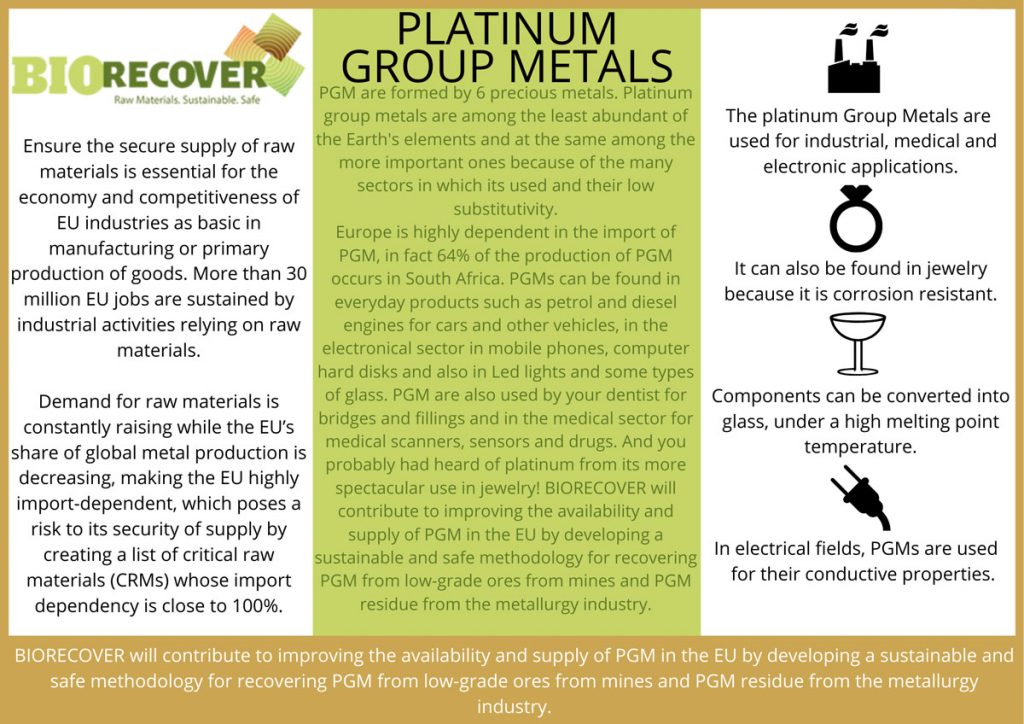
LEARN ABOUT COBALT
USES
Steel production
- Coking coal, also known as metallurgical coal, is used to create coke, one of the key irreplaceable inputs for the production of steel. Steel, offering the highest strength-to-weight ratio, is an essential material for the construction and transport sectors.
RECYCLABILITY
It is not possible to recycle coking coal.
LEARN ABOUT FELDSPAR
USES
Glass and ceramics
- Feldspars are used widely in the glass and ceramics industries, giving glass and ceramics their strength and durability.
Pigments
- Feldspar is used as a pigment in paints and other coatings.
Fertilisers
- Feldspar is used as a fertiliser to improve the soil’s ability to retain water and nutrients.
Fillers
- Feldspar is used as a filler in plastics and other materials to improve their strength and durability.
RECYCLABILITY
The recycling of Feldspar involves end-of-life glass and ceramics (containing the original feldspars transformed in a vitreous phase) that can act as flux. However, recycling of Feldspar is not large-scale at this time.
LEARN ABOUT FLUORSPAR
USES
Optic industry
- Because of its high transparency and very low dispersion, fluorspar is often used to make high-quality camera, microscope and telescope lenses.
Coolant production
- Fluorspar is used to make refrigerant systems used for vehicles, refrigerators, and air conditioners.
RECYCLABILITY
Fluorspar is not easily recyclable and therefore most fluorspar contained in waste mainly ends up in landfill. Still, in the coulant production sector, nearly 60 to 70% of fluorinated products are recycled!
LEARN ABOUT GALLIUM
USES
Communication applications
- Gallium is widely used for radio frequency chipsets in mobile and satellite communication or laser diodes in fiber-based communication systems.
Medical applications
- Gallium is also used in some radiopharmaceuticals, for detecting inflammation, infection or cancer.
RECYCLABILITY
Current waste recycling processes of end-users products such as chipsets, in which gallium could be retrieved, rather focus on the recovery of other precious metals like copper, and gallium ends up as an impurity of the metal recycling process. As with many other metals, recycling from industrial waste rather than from end-user products is more common for gallium and constitute a consequent secondary supply source.
LEARN ABOUT GERMANIUM
USES
Optical applications
- Thanks to its high index of refraction and its low optical dispersion, germanium is especially useful to create wide-angle camera lenses, microscopy, as well as the core part of optical fibers. And, as germanium is also transparent to infrared radiation, it can be used to create night-vision devices or satellite imagery sensors.
RECYCLABILITY
The high price of refined germanium encourages recycling. It is estimated that around 30% of the world’s germanium production is supplied by recycling, mainly from waste generated during the manufacturing of fiber optic and infrared optics. But there is little recycling from old scrap and end of life products. Recycling only really occurs during the manufacture of germanium processed materials as the new scrap generated at this stage is directly reintroduced in the manufacturing. Indeed, due to the value of refined germanium, scrap is recovered and re-injected into the production process. However, recycling of old scrap remains low. This is due to dissipation and low-grade uses, as well as extra-terrestrial applications (solar cells for satellites) which cannot be collected.
LEARN ABOUT HAFNIUM
USES
Nuclear applications
- Due to its high thermal neutron absorption cross-section and corrosion resistance qualities, hafnium is used in nuclear reactors control bars.
Lighting
- Due to its heat resistance and its affinity to oxygen and nitrogen, hafnium is a good scavenger for oxygen and nitrogen in gas-filled and incandescent lamps.
RECYCLABILITY
Given its contamination in the industry and the low percentage content of superalloys, hafnium has barely any post-use recycling process.
LEARN ABOUT HELIUM
USES
Cryogenic liquid
- Helium has many uses, the key ones being as cryogenic liquid. Cryogenics is used in a variety of applications, including MRI machines, superconducting magnets, and the production of semiconductors.
Controlled atmospheres
- Helium is used as an inert gas for work under controlled atmosphere.
RECYCLABILITY
Helium is rarely recycled in large-volume applications, however, development of recovery and recycling technologies in certain end-user applications and an increasing usage of helium recovery and purification systems.
LEARN ABOUT Rare Earth Elements
USES
Emerging technologies
- REEs allow for the creation of permanent magnets which are essential to the efficient operation of large wind turbines and hybrid cars. REEs are also vital for other emerging technologies such as solid state fuel cells, superconductors, magnetic cooling or hydrogen storage.
Electronic goods
- Those REE minerals are being used in the conception of magnets, compressors and motors, which is why you can find them in everyday items such as TV, smartphones, light bulbs, speakers, washing machines, or even air conditioners.
RECYCLABILITY
The EU end-of-life recycling input rate for REEs materials is very limited (only 7% for LREEs). The weak interest in recycling REEs is caused by the complexity of the recycling process. Indeed, REEs are usually incorporated as small components in complex items or as part of a complex material, making the recycling process energy intensive, economically costly and very complex.
Also, rare earths materials are very unlikely to be pure once recycled as separation chemistry remains a big challenge in most REE applications.
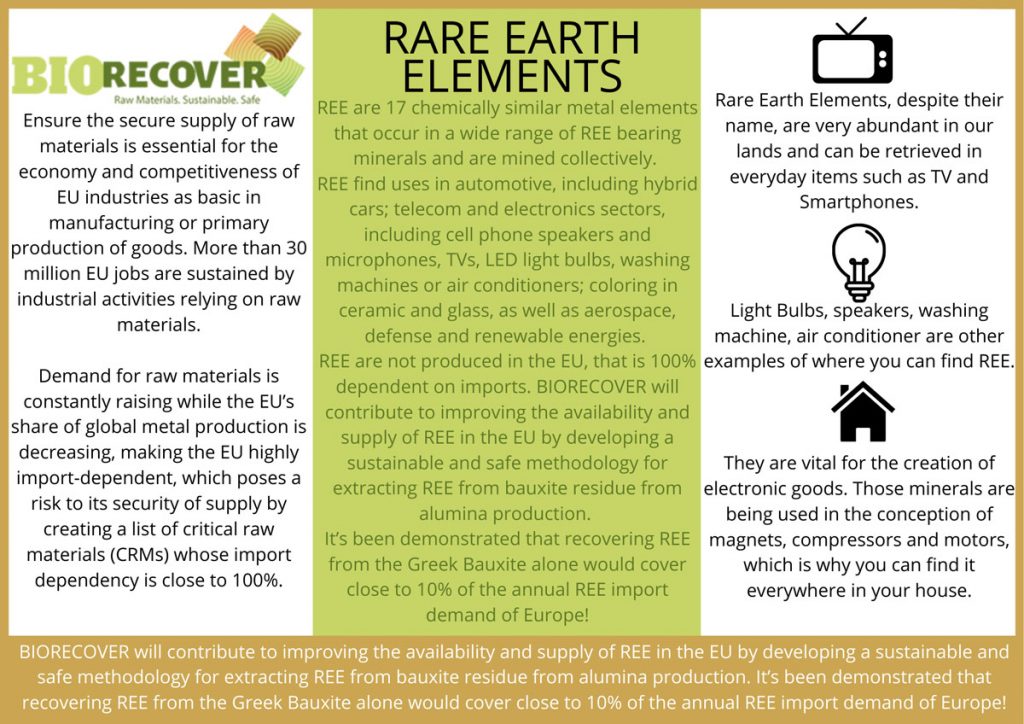
LEARN ABOUT LITHIUM
USES
Battery production
- Lithium is mainly used to create recheargeable batteries for electronic devices such as phones or laptops.
Medical applications
- Lithium is useful in the treatment of a bipolar disorder or related diagnoses, such as schizoaffective disorder and cyclic major depression.
RECYCLABILITY
With the increasing demand for lithium, new technologies to recycle lithium from batteries are being developed. However, concerns remain regarding the purity of the recycled products, meaning that the recycled lithium is currently not reused to make new batteries. Currently, and because of low collection rate, the recycling rate for batteries containing lithium is only at 10% in Europe. This rate is meant to increase with the Commission’s Sustainable Batteries Regulation recycling target being set at 50% for lithium-ion batteries.
LEARN ABOUT INDIUM
USES
Tactile interface
- Because it conducts electricity, bonds strongly to glass, and is transparent, indium is used to make touch screens.
Medical applications
- Indium is sometimes used for fatigue, aging, boosting the immune system, and increasing hormone production.
RECYCLABILITY
Almost two third of refined indium comes from recycling. Indium from scrap generated by manufacturing process can be recycled quickly and turned into a product of the same quality as primary indium. However, recycling indium contained in end-of-life products such as cell phones or computers is currently not economically viable or technological feasible. The amount of indium per device is too small and the recycling technologies do not enable the separation of these special metals from the other materials.
LEARN ABOUT MAGNESIUM
USES
Electronics
- Because of its low density and good mechanical and electrical properties, magnesium is used for the manufacturing of electronic devices such as mobile phones, laptop, and cameras.
Transport industry
- Magnesium is the preference in all light-weighting vehicle concepts, being automotive, aircraft, or train. Mg components can be found in car seats, engine parts. It can also be used in ships, as components to prevent corrosion of iron and steel in pipes.
Pyrotechnics uses
- Magnesium can generate a bright light which is why it is used in the creation of fireworks or sparklers.
RECYCLABILITY
The recycling of magnesium is technologically feasible and economically affordable. Recycling or reuse of scrap is common in the magnesium industry, reducing the demand of primary magnesium by up to 50%. However, the magnesium recycling rate for end-of-life products is quite low in the EU. Only 9 % of the available magnesium from end-of-life products goes to functional recycling, while 34 % is sent to disposal and 57 % ends up in non-functional recycling paths.
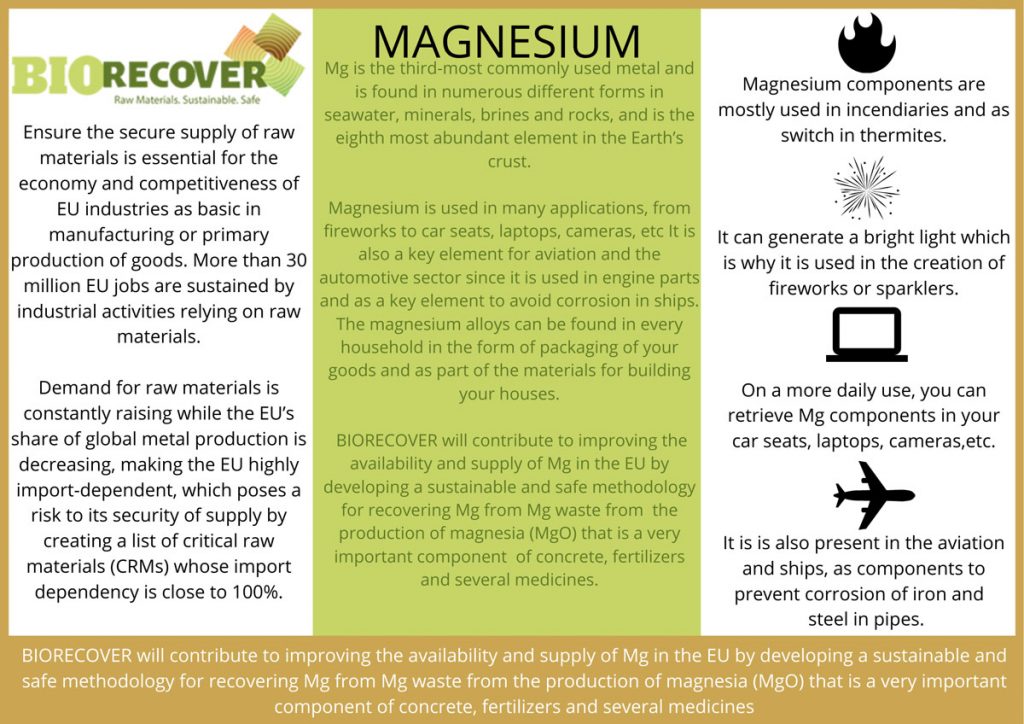
LEARN ABOUT MANGANESE
USES
Deoxidising and desulfurising additives and as an alloying constituent
- Manganese is mainly used in metallurgical processes. Manganese is used in steelmaking as it is a key alloying element in steel, and it is used to improve the strength, toughness, and wear resistance of steel.
Batteries
- Manganese used in the production of dry-cell batteries.
Chemical manufacturing
- Manganese is also used in chemical manufacturing.
Glass Production
- Manganese is used in glass manufacturing.
Textiles
- Manganese is used in textile production.
Fertiliser
- Manganese is used as a fertiliser.
Additives in petrol
- Organic carbonyl compounds of manganese are used as fuel-oil additives, smoke inhibitors and anti-knock additives in petrol.
Batteries
- Manganese is used in the production of lithium-ion batteries, which are used in electric vehicles and other portable devices.
Refractories
- Manganese is used in the production of refractories, which are materials that can withstand high temperatures.
Lubricants
- Manganese is used in the production of lubricants, which are used to reduce friction and wear.
RECYCLABILITY
The United Nations Environment Programme (UNEP) estimates end-of-life (EoL) recycling of Manganese can be recycled predominantly as a constituent of ferrous (e.g. iron and steel) and non-ferrous (e.g. aluminium packaging) scrap. Also, Manganese can be recycled from e-waste, such as computers and televisions, and waste batteries, such as lithium-ion batteries.
LEARN ABOUT NATURAL GRAPHITE
USES
Lubricating properties
- When a moving surface is under extremely high temperature or radiation, solid-state lubricants such as graphite must be used to replace traditional oil or fat.
Refractory applications
- As graphite is a refractory material tolerating high temperatures, it is very useful to produce steel or glass.
RECYCLABILITY
As it can easily be separated from other materials and as contamination is not an issue, natural graphite can be successfully recycled. however, given the abundance of graphite in nature, recycling is currently not a priority and most of natural graphite contained in the end-of-life products ends up in landfill as hazardous waste.
LEARN ABOUT NATURAL RUBBER
USES
Medical applications
- Natural rubber brings elasticity to products while creating a barrier to water. Therefore, it is especially useful in medicine for gloves, or to make catheters for instance.
Automotive
- Natural rubber is mainly used for the production of tires, and other automotive components such as airbags.
RECYCLABILITY
The EU end-of-life recycling input rate for natural rubber is as low as only 1%. Indeed, due to contamination issues, recycled natural rubber loses the specific properties, making it impossible to reuse it for some applications. Thus, with the available technology, there is only very limited scope for recycling from product-to-new-product (ex. tyre-to-new-tyre), but rather from product-to-other-products requiring lower properties.
LEARN ABOUT NICKEL
Nickel is included on the EU Critical Raw Materials list 2023 as a Strategic Raw Material, however, not as a Critical Raw Material.
USES
Stainless steels
- Nickel is mainly used to produce different stainless steels Nickel is a major component of stainless steel, which is a strong and corrosion-resistant material.
Alloys
- Nickel is used in a variety of alloys which are used in a wide range of applications, including the aerospace, chemical, and oil and gas industries.
Metal plating
- Nickel is used for plating for the protection of metal goods, such as steel and copper. This helps to protect the underlying metal from corrosion and wear.
Batteries
- Nickel is used in the battery sector and its demand increases , as it is used in some cathode materials for lithium-ion-batteries.
RECYCLABILITY
Nickel can be recycled without loss of quality and sourced as secondary raw material to be used in many of its applications. Recycling nickel helps to conserve this important resource and reduce the need to mine for new nickel.
LEARN ABOUT NIOBIUM
USES
Superconducting properties
- Niobium is used in various superconducting materials, such as magnets for MRI scanners and in particle accelerators.
Medical applications
- Niobium is physiologically inert and hypoallergenic, thus it is used in prosthetics and implant devices, such as pacemakers.
RECYCLABILITY
Research is being conducted on how to improve the sorting of niobium from steel scrap. But at the moment, separating niobium present in the alloy makes the process too expensive and, thus, economically not convenient so almost no niobium is directly recovered. Still, niobium is recycled as part of recycling steel, and around 85% of steel is recycled worldwide.
LEARN ABOUT PHOSPHATE ROCK
USES
Agricultural applications
- Phosphate rock is mainly used to make fertilizer, as it contains phosphorus, an essential plant nutrient. Fungicides and insecticides can also be made of Phosphate rock.
Food production
- Phosphate is also used in animal-feed supplements and in food preservatives.
RECYCLABILITY
Given the limited amount of phosphate rock in the world, the growing difficulty to access new sources, and the difficulty to recycle phosphate rock, industries are looking at alternatives. Thus, phosphate rock is often replaced by secondary sources of phosphorus recycled, which show same quality as primary source phosphate rock.
LEARN ABOUT PHOSPHORUS
USES
Agricultural fertilizer
- Phosphorus is essential for all living organism and thus is an important plant nutrient. It is involved in energy transfers, roots strength, and photosynthesis.
Metallurgical applications
- Phosphorus is also an important component in the making of phosphor bronze, an alloy used for objects that must withstand various tensile stresses, wear or corrosion such as springs or screws.
RECYCLABILITY
Since recycled phosphorous has the same quality of the primary source of phosphate rock, it provides a promising solution to the disappearing phosphate rock reserves. Phosphorous is mainly recycled in agricultural processes and from biogenic waste flows such as food and vegetal waste, manure and sewage sludge. It has an end-of-life recycling input rate for around 17% in the EU.
LEARN ABOUT SCANDIUM
USES
Lightweight alloys
- Scandium can be added to aluminum to increase its strength without increasing its weight, which is especially interesting for the aerospace industry.
Energy storage
- Scandium can be used to create Solid Oxide Fuel Cells for energy storage.
RECYCLABILITY
Recycling scandium is currently economically not viable nor technologically feasible. No active recycling circuit currently exists for scandium, mainly because the cost of recycling is very high due to difficult separation process.
LEARN ABOUT SILICON METAL
USES
Steel production
- Ferrosilicon, the most commonly used form of metallic silicon, is an important deoxidizing agent in the production of stainless steel.
Solar energy production
- Silicon is essential to the photovoltaic industry. Today, 90 percent of solar energy is collected by silicon-based technology.
RECYCLABILITY
The huge annual growth in consumption of photovoltaics, where silicon is the dominant PV material, is boosting research activities to recover waste containing silicon. Some research shows that some procedures are able to recover silicon metal with more than 90% of purity. But yet, silicon metal is currently not recovered from post-consumer waste. The end-of-life recycling input rate is therefore 0%.
LEARN ABOUT STRONTIUM
USES
Pyrotechnics uses
- Strontium is often used in ‘glow-in-the-dark’ paints, as it absorbs light during the day and releases it slowly for hours afterwards.
Electricity creation
- Its high-energy radiation can be used to generate an electric current, and therefore Strontium is used in space vehicles or remote weather stations.
RECYCLABILITY
Technologies to recycled strontium are largely underdeveloped. Only residues resulting from the production of magnets are efficiently recycled for further use in magnet production. Indeed, the magnetic properties of recycled strontium ferrite powders are comparable to those of the starting material.
LEARN ABOUT TANTALUM
USES
Capacitor for electronic devices
- Because tantalum can be used to coat other metals with a very thin layer, a high capacitance can be achieved in a small volume which makes it attractive for portable electronics such as mobile phones.
Medical applications
- As it causes no immune response, tantalum can be used to replace bones, connect torn nerves or bind abdominal muscle.
RECYCLABILITY
Tantalum atoms can be recycled indefinitely and retain its elemental properties. As tantalum is a relatively high-value metal, it is almost fully recycled when possible, such as from in the superalloys used in jet engines for instance. But in some other applications, tantalum can be highly dissipated, making its identification, separation and aggregation for recycling challenging.
LEARN ABOUT TITANIUM
USES
Aerospace and defence
- Because titanium alloys have high tensile strength, high corrosion resistance, and ability to withstand moderately high temperatures while being lightweight, they are used for spacecraft and missiles.
Medical applications
- Because titanium is biocompatible (non-toxic and not rejected by the body), it is often used in medical implants.
RECYCLABILITY
Recycled titanium does not lose any specific properties and thus is essential to replace primary titanium. Currently, the end-of-life recycling input rate for titanium is more than 50%, but finding a viable way to recycle titanium was difficult. New technologies are now using advanced furnaces to reduce emissions and ensure that recycling titanium is less energy intensive than refining the primary metal.
LEARN ABOUT TUNGSTEN
USES
Cemented carbide
- Because tungsten carbide is immensely hard, it is very important to the metal-working, mining and petroleum industries to create cutting and drilling tools for instance.
Electronics & electrical industries
- Thanks to its high melting point, low vapor pressure, and conductive properties, tungsten is used for light bulbs and electrodes.
RECYCLABILITY
The end-of-life recycling input rate for Tungsten is at 42%. The tungsten processing industry can recycle almost every kind of tungsten-containing scrap, and as recycled tungsten keeps its specific properties and is already widely used by industries and plays an important part in the world’s tungsten supply.
LEARN ABOUT VANADIUM
USES
Energy stabilisation and production
- Vanadium can stabilize the energy flow, which is still currently an issue in renewable energy production, such as wind turbines and solar panels. Vanadium can also be use to create batteries that have ten-times longer life-span than lithium-batteries, can charge and discharge simultaneously and are able to release huge amount of electricity instantly.
RECYCLABILITY
The end-of-life recycling input rate for Vanadium is 44%. Vanadium can be recovered and refined via several processes. It does not lose its specific properties and maintains the same quality of primary produced vanadium.
Why are CRMs important for the sustainability of our economy and what are the potential risks in terms of supply?
 The expansion of renewable energy technologies such as electric car batteries and solar panels can be deeply impacted by a lack of REE.
The expansion of renewable energy technologies such as electric car batteries and solar panels can be deeply impacted by a lack of REE.- As CRMs are mainly produced in China and because the demand is growing, geopolitical issues could appear if China decides to lower its volume of exports.
- Business opportunities have appeared those past few years despite Europe’s dependence on foreign imports for CRMs and uncertainty towards supply, price volatility and market changes.
- Europe’s environmental impacts caused by its reliance on foreign imports and mining, can be decreased through the recycling of waste for a more sustainable use of CRMs.
- European countries have to find replacements and establish new, innovative, clean, and sustainable technologies in order to extract and transform CRMs.
WONDERING HOW BIORECOVER WILL ADDRESS THE CHALLENGE OF CRMs SUPPLY ?
BIORECOVER’s main objective is based on the research and development of a new sustainable and safe process, essentially based on biotechnology, for selective extraction of a wide range of Critical Raw Materials.













